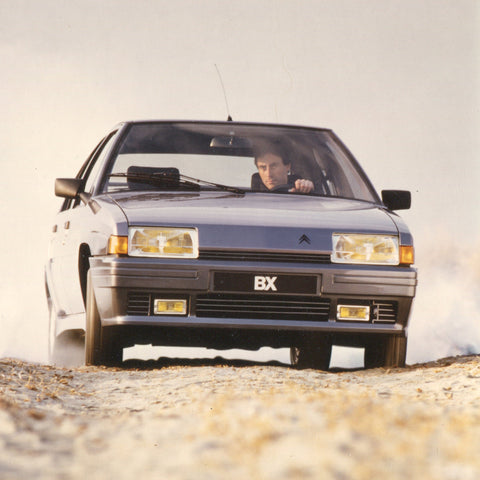Research showed that, while Citroën was perceived as very comfortable, it was lacking sportiness and dynamism. This had to change and Citroën decided it was time for a new image. In late 1984, the first results became visible when the Visa GTI and the CX GTI Turbo were presented. In March 1985, a third sporty model appeared: the BX Sport.
It featured new bumpers, a huge rear spoiler, skirts, wing extensions and new alloy wheels. The sharp-cut rear wing looked exceptionally vicious. The Sport's interior was similar to that of the BX 19 GT in terms of equipment. A new, three-spoke steering wheel and a special gear knob underlined its sporty character.

Under the bonnet it featured the engine from the BX 19 GT, which had been modified to provide 20% more power: a leap from 105 to 126 hp. That was enough for a sprint from zero to 100 km/h in 8.9 seconds and a top speed of 195 km/h. And as it turned out, in practice, the BX Sport could be even slightly faster...
Initially, the BX Sport was only available in two shades of grey. Purely for demonstration purposes, a few cars were also painted in red. Citroën originally intended to build only a one-off series of 2,500 Sports. However, the BX Sport turned out to be a hit. Press and public were wildly enthusiastic. That is why Citroën included the Sport in its regular range from the 1986 model year onwards. From then on, the BX Sport was also available in red, black and white. A version with the steering wheel on the right-hand side also appeared at that time. Its success eventually lasted until June 1987, when BX GTI 16v came on the market, replacing the Sport. Today, the BX Sport is a popular youngtimer.








